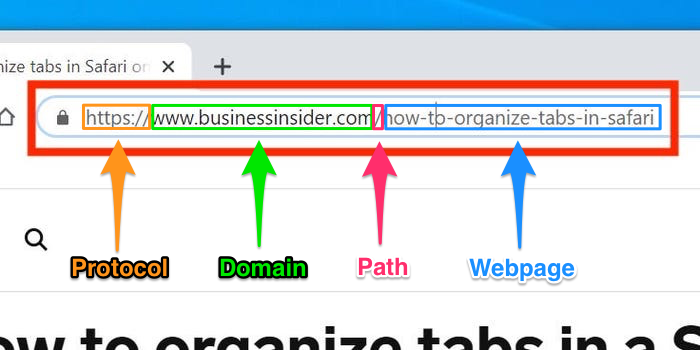
Altayb/Getty Images
- A URL is a Uniform Resource Locator, a tool used to find webpages.
- A URL is composed of a protocol, a domain name, a path to the webpage, and a webpage name.
- Here’s a brief introduction to URLs and how they work.
- Visit Business Insider’s Tech Reference library for more stories.
You might know that a URL is more or less synonymous with a web address – the information you type into the address bar of a web browser to go to a specific website. Every page on the internet has its own URL.
Here’s a brief guide to what a URL is and how it works.
What to know about URLs
A URL is a Uniform Resource Locator, the name given to the way webpages are referenced and found using web browsers. The URL is made of several parts:

Dave Johnson/Business Insider
Protocol: Usually either http:// or https://, this tells the web browser to expect a web address to follow. Modern web browsers don’t require you to type the protocol; it will fill that in on its own.
Domain: This is the highest-level part of a URL – the website’s name – and you can think of it as the computer on which the webpage is stored. In reality, the domain is probably made up of many computers, especially for large domains accessed by many people.
Path: Think of this as the folder structure of the website, so a browser knows which subfolder to find the webpage in.
Webpage: This is the last part of the URL and is the specific page you are requesting. It's generally the actual filename of the page as it is stored on the domain computer.
In reality, a URL is hiding a lot of complexity; the URL is a user-friendly stand-in for an IP address, which is a string of characters that serves as the webpage's actual location on the internet. When you enter a URL into a web browser, your browser then looks up the IP address of the domain name using a tool called an Domain Name Server (DNS). The DNS is like a phone book used by every web browser.
Related coverage from Tech Reference:
-
How to organize tabs in Google Chrome to declutter your web browsing
-
How to boost your internet speed at home in 8 ways, and make sure you're not being overcharged for low speeds
-
iOS 14 allows you to change the default web browser on an iPhone to your favorite browser's app - here's how to do it
-
'What is my IP?': Here's what an IP address does, and how to find yours
-
SEO decides where your website ranks on search engines - here's how it works and how to improve your search ranking
